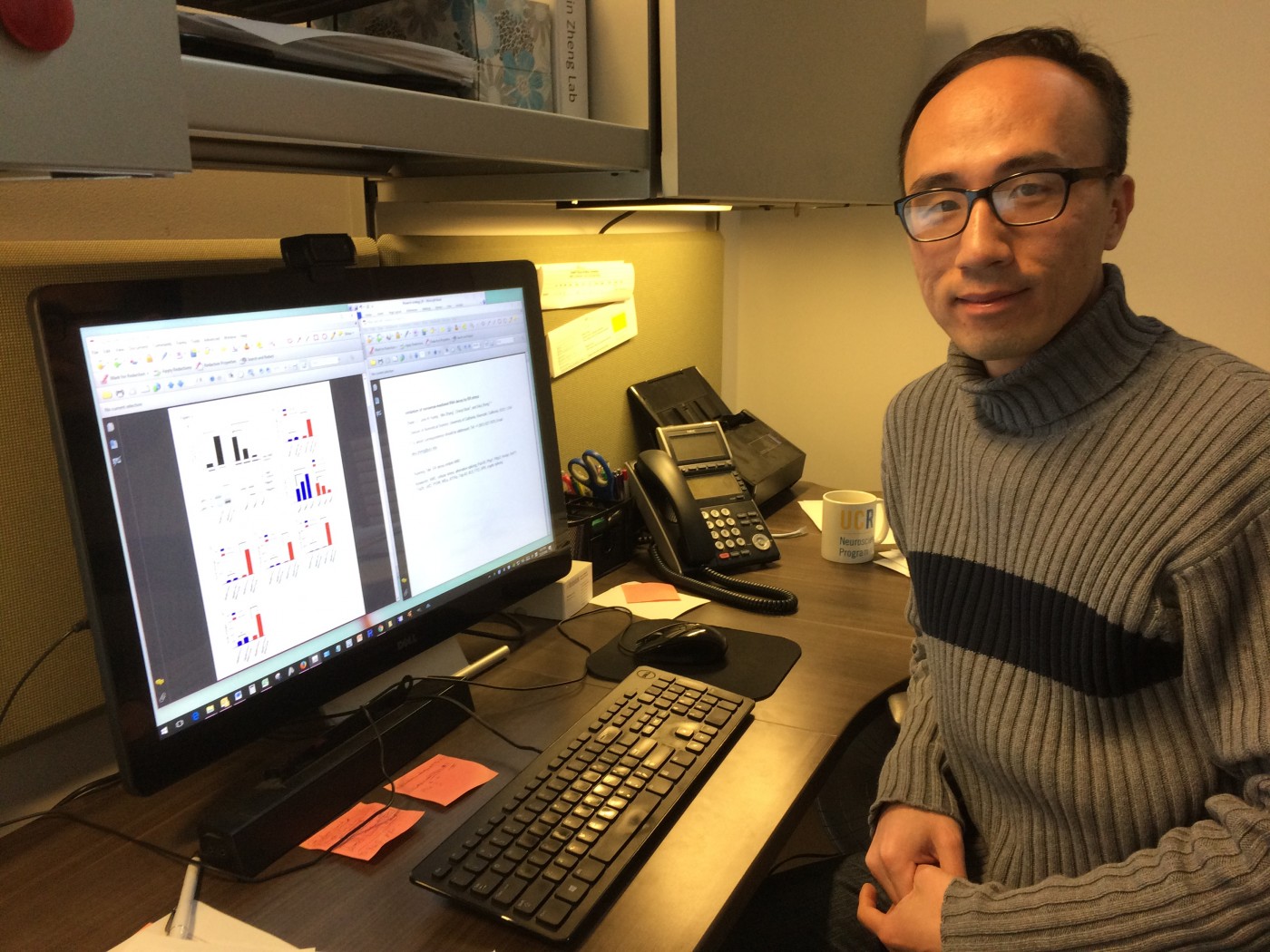Scientists Create New Method of Helping to Target Therapies for CF

Sika Zheng. Photo credit: I. Pittalwala, UC-Riverside.
Scientists at the University of California-Riverside have developed a novel way to help target therapeutics for cystic fibrosis (CF) and other diseases.
Their study, “Inhibition of nonsense-mediated RNA decay by ER stress,” appeared in the journal RNA.
The information encoded in human DNA is first converted to RNA, and then from RNA to protein. But that conversion process is complex, increasing the possibility of errors. Yet cells have developed mechanisms to prevent such errors from occurring, or to “clean up” wrong RNA messages from being converted into aberrant proteins.
One of these mechanisms is the nonsense-mediated RNA decay (NMD) pathway, which helps prevent the production of disease-causing aberrant proteins.
NMD is helpful, for example, in diseases like amyotrophic lateral sclerosis (ALS), where cells accumulate wrong RNA messages. NMD activity helps cells rid themselves of erroneous DNA. But in diseases like CF, the loss of the protein carrying the gene’s CFTR message leads to disease. In this case, it’s preferable to decrease NMD activity than to increase it.
In other words, CF patients do not want the NMD pathway to eliminate the CFTR-defective RNA, because the defective RNA may be converted into a semi-functional protein, which, in CF, it is better than no protein at all. Lower NMD activity might be beneficial in CF than higher activity, which may help ALS patients.
A team of scientists says it has developed a laboratory method to effectively measure NMD efficiency inside the cell.
“Our method can screen a host of chemicals and allows us to identify molecules that regulate this efficiency,” Sika Zheng, study lead author and assistant professor of biomedical sciences at UC-Riverside’s School of Medicine, said in a press release. “We have already identified thapsigargin as a molecule that indirectly and robustly inhibits NMD.”
Researchers using this new method took certain normal targets of NMD and turned them into “reporters” of NMD activity. This will allow scientists to measure not only NMD activity in cells but also in tissues for the first time.
“Our method is far easier and more sensitive, and for the first time can make measurements in all kinds of samples,” Zheng said. “This is essential for drug screening. We are going to screen a larger library of chemicals to identify molecules that either boost or weaken NMD, which should help develop better and more targeted drugs for treating ALS, muscular dystrophy and cystic fibrosis.”







